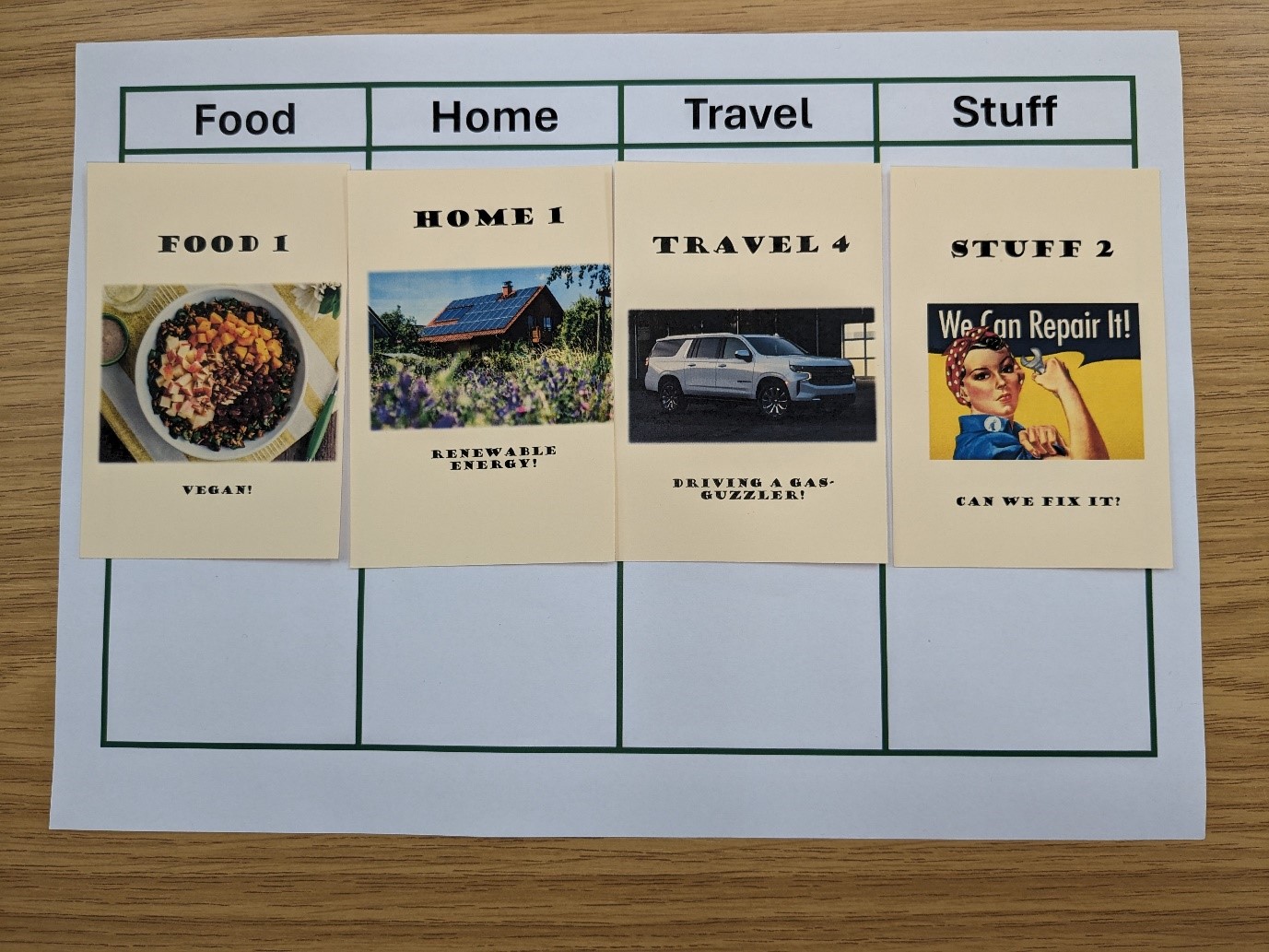So!
A colleague of mine had arranged a Games Jam with Games Design staff and students. This involves taking a theme for a game on a Monday and presenting a finished game on the following Friday.
Something of a challenge!
The selected theme for this Jam was the United Nations Sustainable Development Goals.
As a lifelong gamer and working in the Academy for Sustainable Futures I felt compelled to take part. Looking at my schedule, it became clear that the only time I would be able to put in some serious thought would be during a day of train journeys, which promised to be ideal. I would then have a couple of hours later in the week to make any components that were needed.
The train journeys were rather long and tortuous – a bus replacement service due to a subsiding embankment (both ways) and a cancelled train. The usual.
But it did give me plenty of time to think, make notes, and design my game.
So, what did I come up with?
What was my thought process?
Well!
I quickly decided to create a card game that reflected our personal carbon footprint, linking in nicely to SDG 12 Responsible Consumption and Production. The cards would be divided into four themes, each representing part of our footprint, as outlined by WWF’s Carbon Footprint Calculator:
- Food – different diets have very different carbon footprints.
- Travel – flights and SUVs have a much larger carbon footprint than cycling and using public transport.
- Home – how efficient is the heating in your home? How do you manage the use of hot water?
- Stuff – do you need the latest phone, computer, etc? Do you upcycle and repair things?
With the themes set, I decided that each theme would have 5 ranks, numbered 1 to 5, representing different levels of commitment/achievement in managing a carbon footprint:
| Rank | Food | Travel | Home | Stuff |
| 5 | Eating lots of red meat. | Lots of flights. | Inefficient home. | Too much shopping. |
| 4 | Chicken or low meat diet. | Driving a gas-guzzler. | Too hot. | Must have gadgets. |
| 3 | Fish based diet. | Driving an economical car. | Energy efficient home. | Quality items that last. |
| 2 | Vegetarian. | Using public transport. | Sensible temperatures. | Repairing damaged items. |
| 1 | Vegan. | Cycling and walking. | Renewable energy. | Upcycling old items. |
So!
The object of the game is to collect a set of cards, one from each theme, where the total ranks are as low as possible. The best possible score is therefore 4 for a Vegan who lives in a house with solar panels that is full of upcycled stuff and cycles everywhere.
Nice and simple!
All done, except for designing and printing the cards!
But then I boarded a packed bus replacement service and was confronted by someone who did not want to share the seat.
I persuaded them to share the seat.
But that put me in a confrontational frame of mind, so I had to modify the game to reflect this!
Yes! A new rule that allows players to switch the other players cards for something worse. Life is like that, of course, our best laid plans often go awry, and this is nicely reflected in the game.
The cards were designed in PowerPoint, one card per slide. It works rather well. You can even design backs for the cards! Printing was made easier by converting the slides into a PDF and then printing 8 to a page and cutting them with a guillotine.
The final stage was playtesting! This went well, with everyone having fun and quickly catching on that winning involves a balance between building your own low carbon hand while sabotaging the other players with high carbon cards. One play tester suggested a great adjustment to the game, which was quickly adopted.
This was a very enjoyable experience, certainly giving my train journey a great secondary purpose, and resulting in a game that will definitely be played in the future.
Why not have a try yourself? You might invent the next Magic the Gathering…
By John Hills, Sustainability Projects Officer
 Sustainability
Sustainability Bethany Climpson
Bethany Climpson 1422
1422



I liked this game alot and decided to keep it in our school exhibitz and many people did enjoy it although there were some coments on the game being a little too short so I ended up making a few changes however the game experience for everyone was fun.!!
Thank you so much for the idea